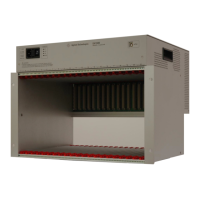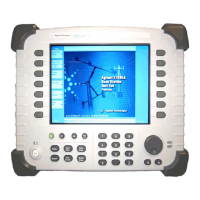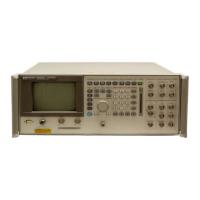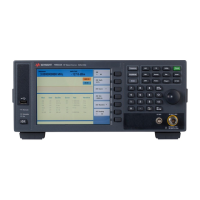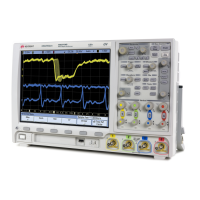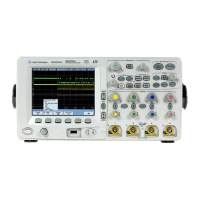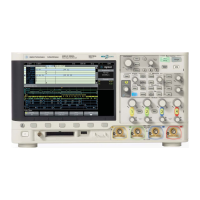Chapter 3 59
Making EDGE (with GSM) Measurements
Making the Power vs. Time Measurement
Making the Power vs. Time Measurement
Purpose
Power vs. Time measures the mean transmit power during the “useful
part” of GSM bursts and verifies that the power ramp fits the within
the defined mask. Power vs. Time also lets you view the rise, fall, and
“useful part” of the GSM burst.
GSM is a Time Division Multiple Access (TDMA) scheme with eight
time slots, or bursts, per RF channel. If the burst does not occur at
exactly the right time, or if the burst is irregular, then other adjacent
timeslots can experience interference. Because of this, the industry
standards specify a tight mask for the fit of the TDMA burst.
The Power vs. Time measurement provides masks for both BTS (Base
Transceiver Station) and MS (mobile station). The timings are
referenced to the transition from bit 13 to bit 14 of the midamble
training sequence. The 0 dB reference is determined by measuring the
mean transmitted power during the “useful part” of the burst. You can
also define a user configurable limit mask to apply to the measured
burst using SCPI commands (refer to the “Changing the Measurement
Setup” section).
The GSM specifications defines the “useful part” of the normal GSM
burst as being the 147 bits centered on the transition from bit 13 to bit
14 (the “T0” time point).
Measurement Method
The instrument acquires a EDGE or GSM signal in the time domain.
The “T0” point and the useful part are computed. If Burst Sync is set to
Training Seq, a GSM demodulation is performed to find “T0”. If Burst
Sync is set to
RF Amptd, an approximation of “T0” will be used without
performing a demodulation. The average power in the useful part is
then computed and displayed, and the GSM limit mask is applied. The
measurement displays Pass when the burst fits within the bounds of
the mask.

